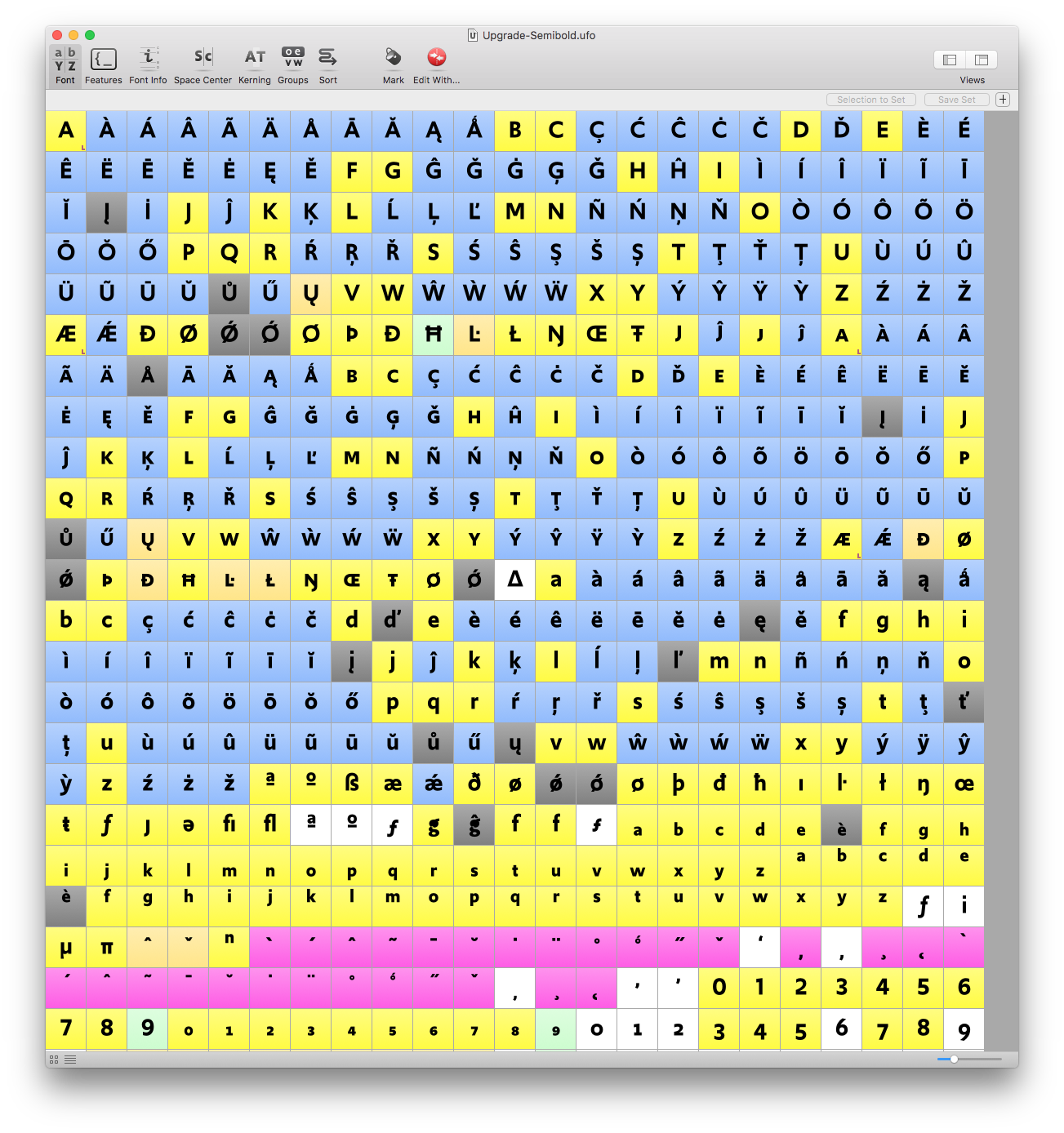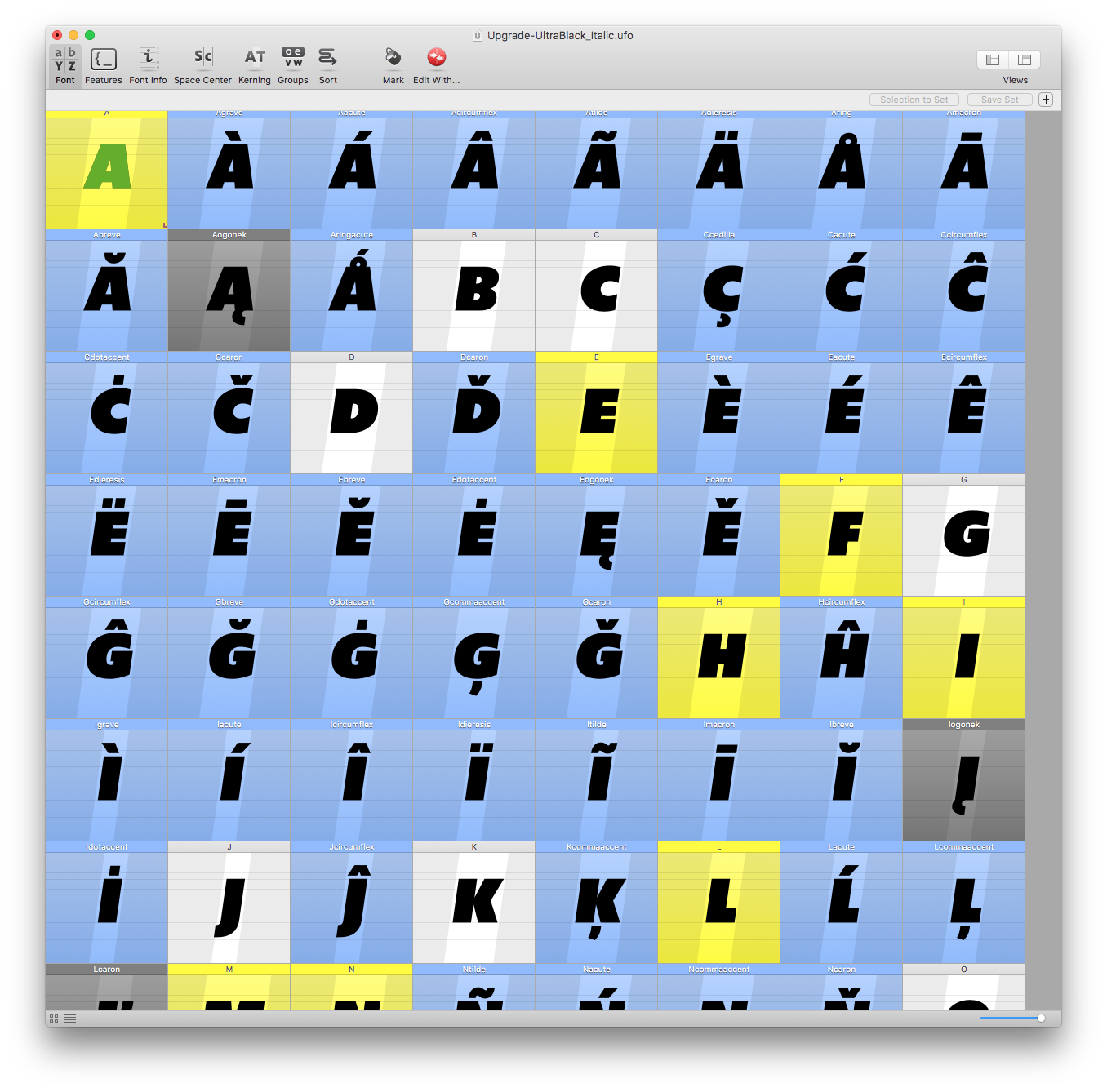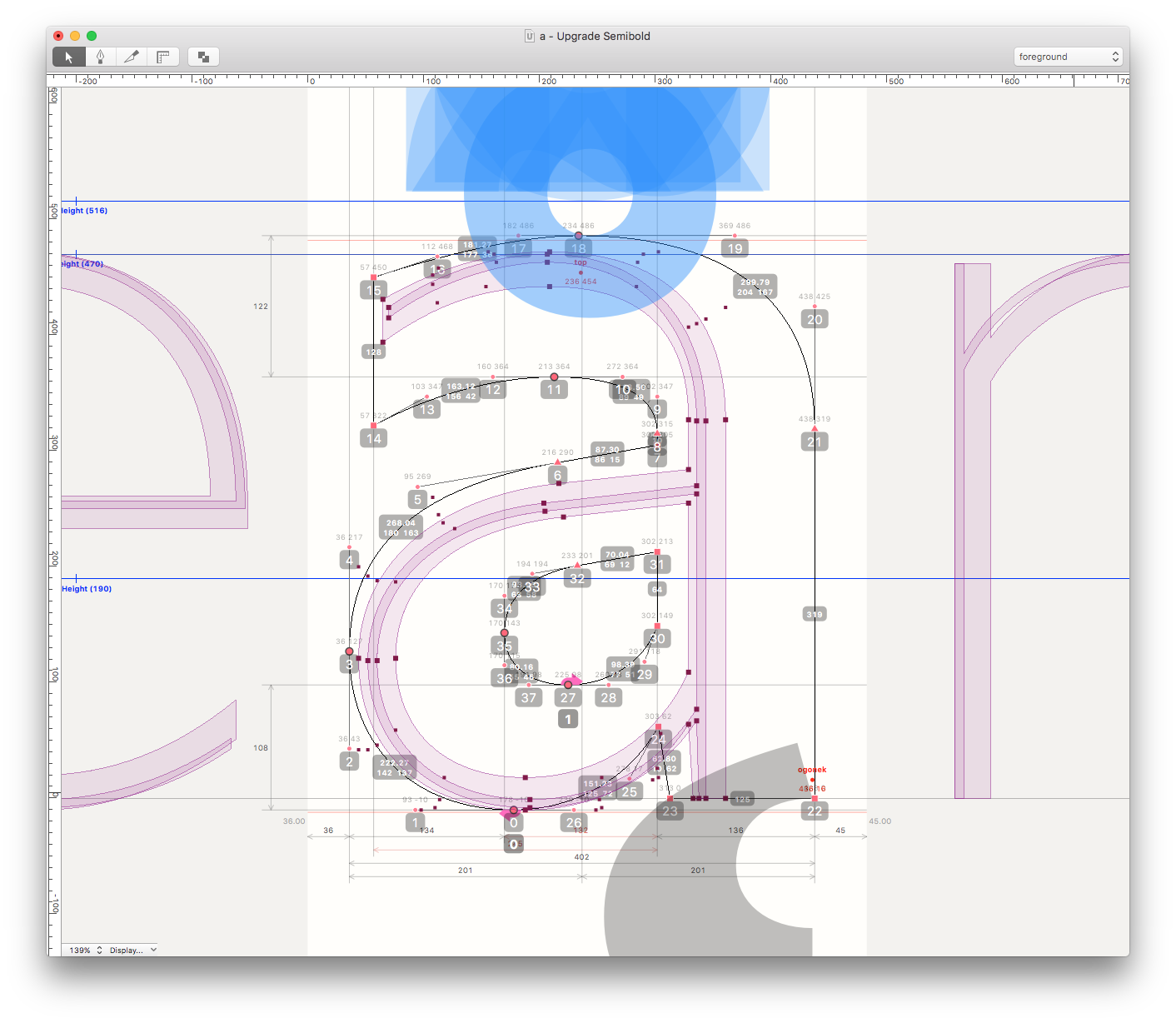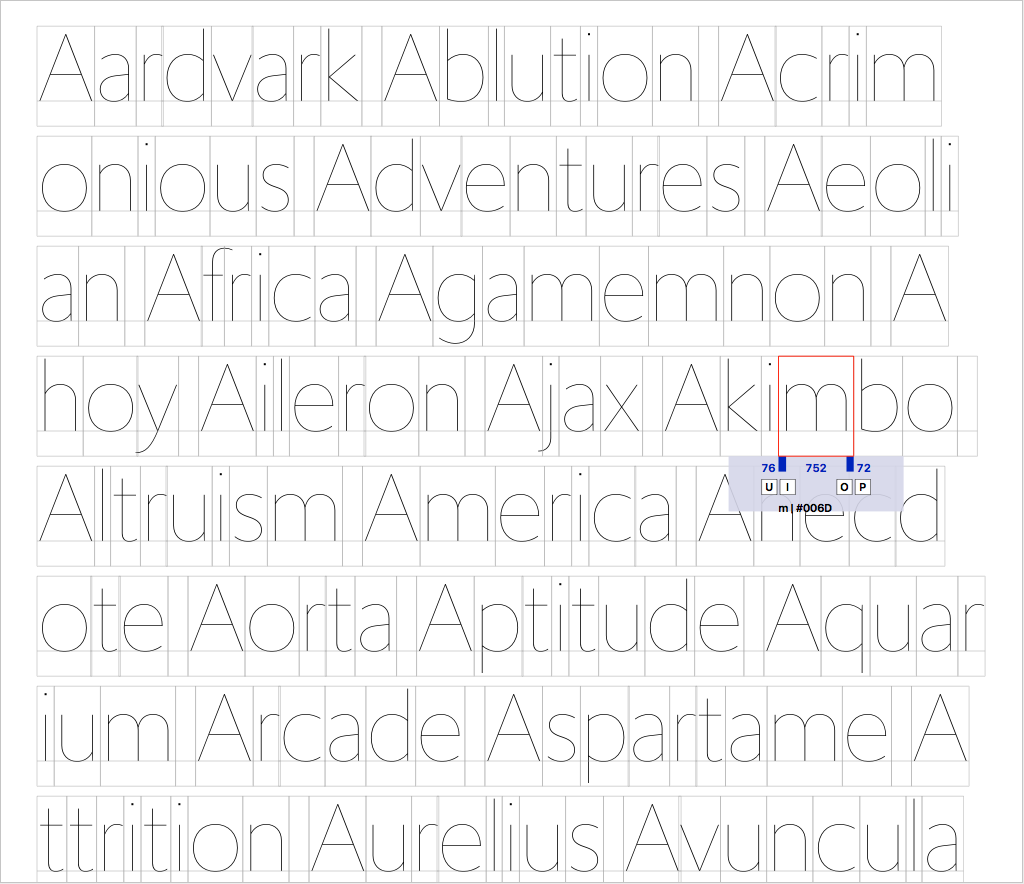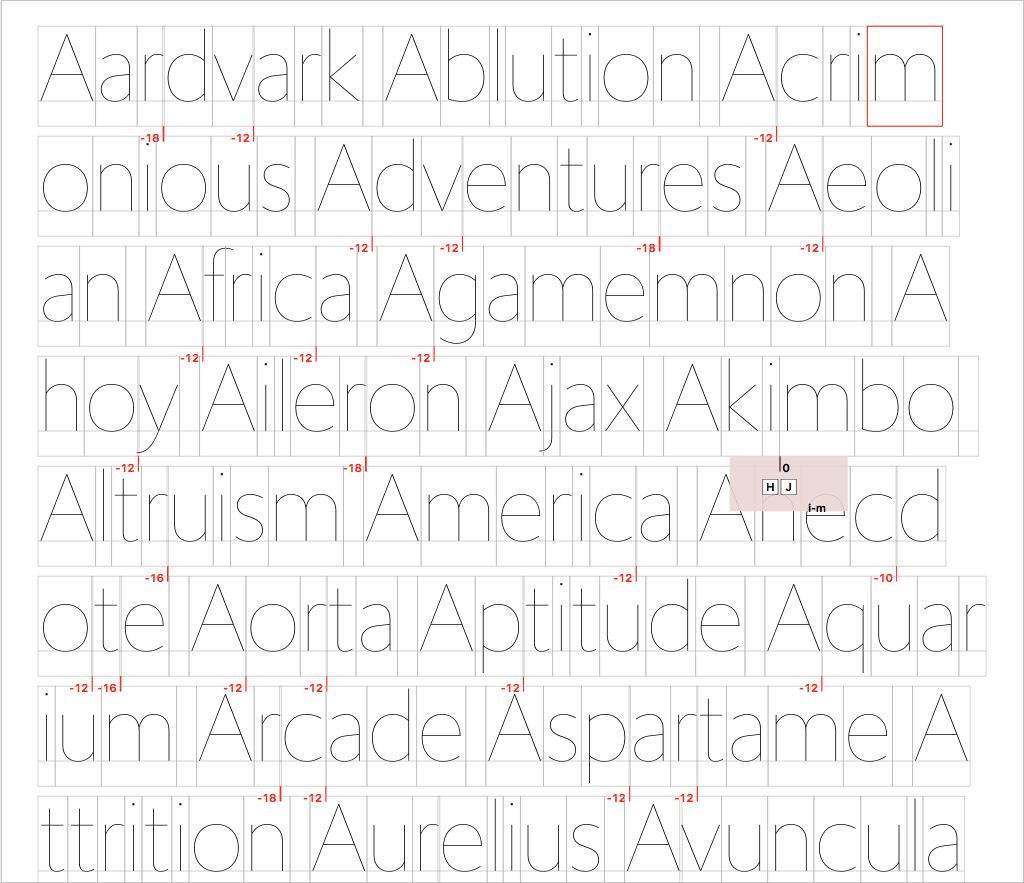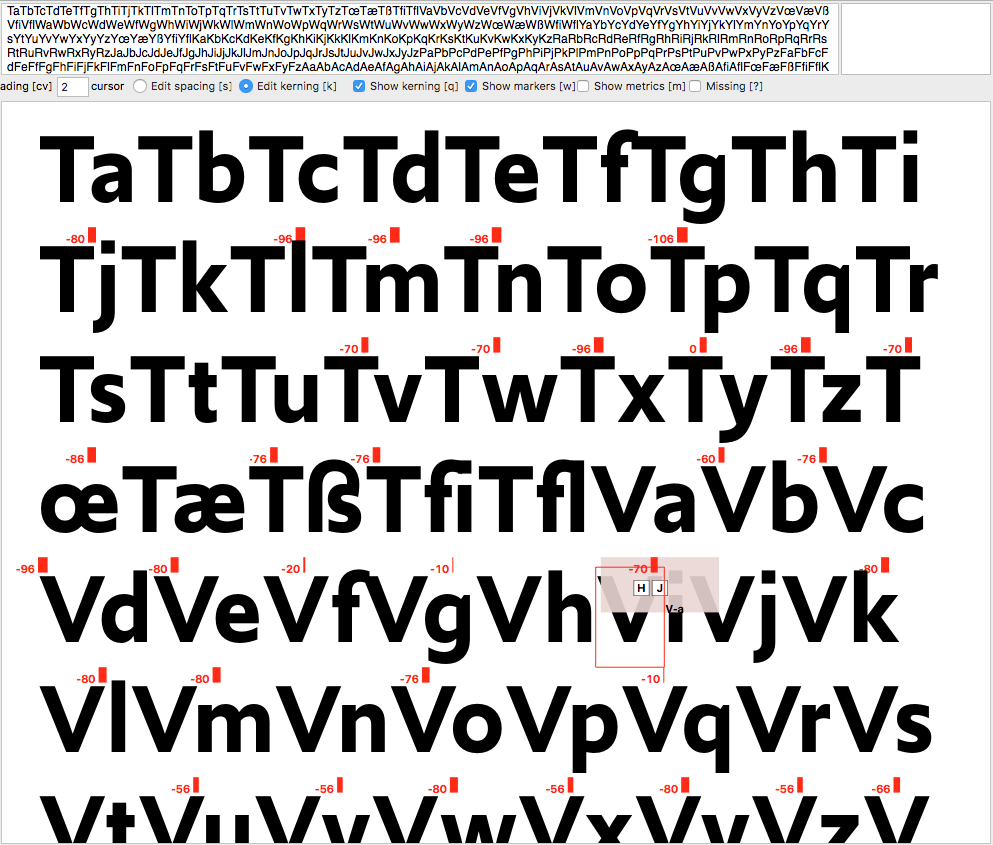The making of Upgrade
TYPETR Upgrade was made with RoboFont, the type-design tool developed by Frederik Berlaen. The application is entirely written in Python, which allows designers to “hack in” at any level of their tools.
RoboFont runs on top of a number of other code libraries, such as Tal Leming’s Vanilla and Defcon, Just van Rossum’s FontTools (now fully supported and maintained by Google), Adobe’s FDK, and Erik van Blokland’s “MutatorMath”, to name a few.
The community of professional type designers is relatively small, and its tasks are so diverse, that any comparison to applications like PhotoShop and InDesign fails. For the most part, type designers need to create their own tools to support the design and production of their typefaces. Any existing, canned solution is likely to be used by graphic designers, too. They don’t need type designers for that.
Scripting
The same applies to the development of TYPETR Upgrade. Almost all design and production work was done with Robofont, but over fifty different scripts were used to accomplish specific tasks, such as the automatic creation of characters, testing tension in curvature, testing symmetrical spacing, testing the compatibility of similar shapes, creating proof specimens, automatic kerning where possible, and interpolation and conversion to various output formats.
The main reason for developing scripts during the design process is to create short production cycles, so that one can easily test the final result at any stage. Otherwise, wrong guesses can eat up a lot of valuable time.
